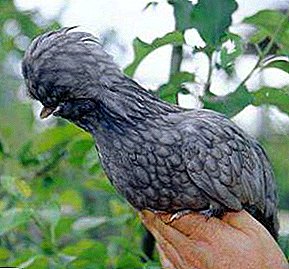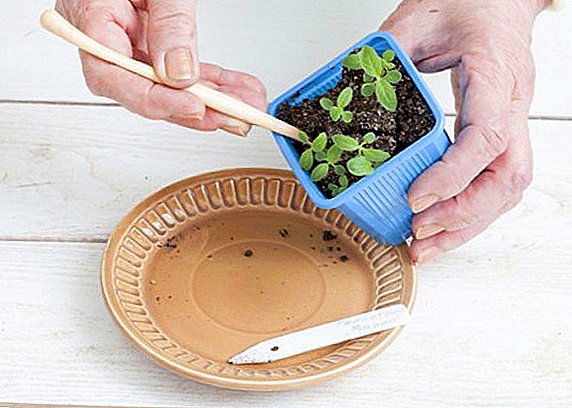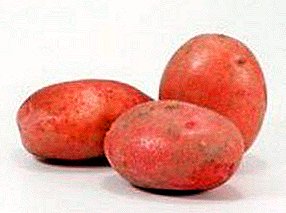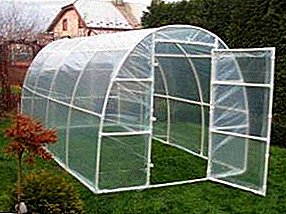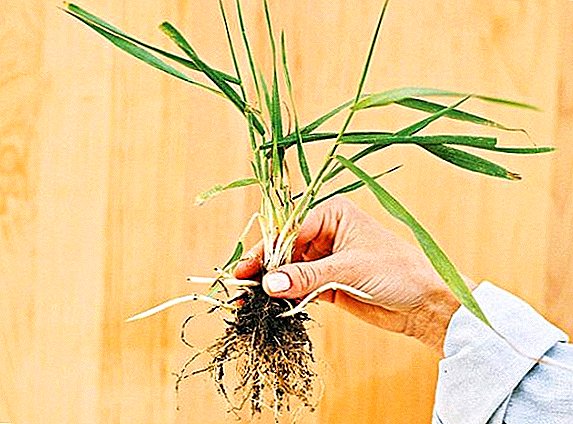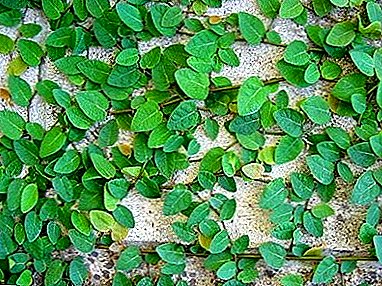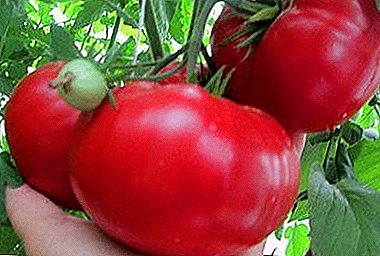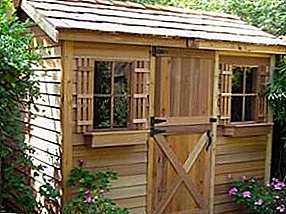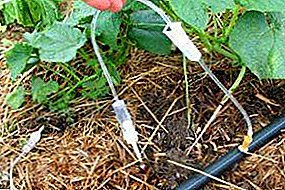
Drop irrigation is a system that has been widely used in many countries. In the middle lane he widely used in greenhouses.
A drip plant saves water, prevents soil erosion, reduces labor costs for irrigation.
How to make drip watering with their own hands in the greenhouse? How to organize automatic watering in the greenhouse with your own hands, we'll talk further in the article.
The advantages of the system
 Automatic watering in the greenhouse do it yourself prevent the occurrence of burns in plants, and in fact they often occur with the usual method of irrigation of the land. Since droplets cause a lens effect, the plants may suffer.
Automatic watering in the greenhouse do it yourself prevent the occurrence of burns in plants, and in fact they often occur with the usual method of irrigation of the land. Since droplets cause a lens effect, the plants may suffer.
Water access occurs gradually, the earth is perfectly saturated with moisture. But if we consider the usual method of irrigation, then with it the water penetrates only 10 cm deep.
By installing a drip irrigation system in the greenhouse with your own hands, you will be able to feed the culture with nutrient media with accurate dosage. Pools with irrigation beds are not formed, you will save on fertilizer. Automatic watering installed in the greenhouse, increases yield. Seedlings die less, it also saves money.
Plants get moisture under the roots, improve their growing conditions. Undesirable wetting of the soil is excluded, as well as evaporation of moisture. But the weeds become difficult to grow. Farms experiencing insufficient water supply can accumulate water for irrigation and then correctly distribute it. Agricultural enterprises only on this can save and pay for the system glaze.
Drip irrigation has a positive effect on the roots, the system becomes extensive and fibrous. This gives plants the ability to extract more nutrients from the soil. You will moisten the greenhouse, you can leave the plants unattended for some time.
Important! Having established the system of automatic watering for the greenhouse with your own hands, you will get rid of leaf diseases. Powdery mildew and spider mites will not appear on plants.
Automation options for drip irrigation
Drip irrigation is of several types, but any system of drip irrigation for greenhouses with their own hands must satisfy the following condition: water must be supplied not at the aisle, but to the plant roots. If this is not done, the following consequences are possible:
- crops will grow worse, and weeds will grow;
- the need for loosening will increase;
- Soil heating will occur in the sun.
The system of automatic watering in the greenhouse with their own hands can be made both from improvised means, and with the help of professional equipment.
Improvised system
 How to make drip watering in the greenhouse? Let's find out. If you have a small area, then make a surface drip irrigation. To do this, you need to buy a garden PVC hose, choose the one from which the diameter of the lumen is from 3 to 8 mm.
How to make drip watering in the greenhouse? Let's find out. If you have a small area, then make a surface drip irrigation. To do this, you need to buy a garden PVC hose, choose the one from which the diameter of the lumen is from 3 to 8 mm.
You need to make dies in it. As a tank, you can use buckets by making holes in their bottoms. Pulling out the standard plug. Sometimes you have to use thin rubber seals. This is the best solution if you come to the cottage only for the weekend. The system unfolds, collapses. Before leaving, you quickly put it in place. Automatic watering for the greenhouse with your own hands - the scheme - look at the photo on the left.
With water supply through the pipeline
This method of irrigation is perfect for large areas of land. Everybody is here depends on pressure. You can choose the construction of a full or simplified scheme. Low pressure - 0.1-0.3 bar, normal - pressure 0.7-3 bar. For a pressure of 1 bar, it is necessary to raise the tank by 10 m, but for low pressure installations it is enough to raise the capacity by 1-3 m. It is technically impossible to water the twenty-meter beds.
Of course, today there are high-pressure irrigation systems. Fog irrigation gives great advantages, but it is impossible to make such an installation with your own hands. Will require an appeal to experts. In addition, it is necessary to consider that the cost of such installations is high.
A photo
You can clearly see how to organize drip irrigation in the greenhouse with your own hands, in the photo below:



Water supply options
For a greenhouse, the easiest way is to make a system in which the water source will be as follows:
- general pressure tank;
- water pipes;
- submersible pump in a pond, well or well.
Connect the source to the source. Supply it with a filter and shut-off valve. The tanks with fertilizer solutions are connected to the tower, and the pipelines are connected to the main line itself, through which water will flow to the beds.
You will need:
- drip tubes;
- tapes;
- irrigation tapes.
Tapes are laid on the beds.
Build drip system
 Get an automatic controller, you will program it to turn on at the time of day when you need to water the beds. Appliance need set behind the filter. Choose the right water filter equipment.
Get an automatic controller, you will program it to turn on at the time of day when you need to water the beds. Appliance need set behind the filter. Choose the right water filter equipment.
For open sources gravel-sand systems will dodesigned specifically for coarse cleaning. In combination with disc filters designed for fine cleaning, the system gives an excellent result.
If you take water from the well, then buy a regular mesh or disc filter. Water from the aqueduct or pond must be defended, and then it must be filtered.
Prepare the tools, buy a drip self-watering system in a specialized company. Standard kit contains the following elements:
- water filter;
- tape;
- connectors, with their help you connect the filter and hoses;
- start connectors, they are equipped with taps and have special rubber seals;
- start connectors, they are without taps, but with rubber seals;
- a set of fittings for repairs and splitters required for correct operation.
System installation consists of the following steps:
- Make a diagram. For this measure tape measure beds, mark it on paper, observing the scale. In the diagram, specify the location of the water source.
- Specify the number of pipes, their length. For greenhouses buy PVC products, the most suitable diameter - from 32 mm.
- Connect the trunk pipe to the tank; this can be easily done using a normal garden hose.
- Install a filter, during installation, look at the arrows that indicate in which direction the water is moving. Put the filter, taking into account the recommendations of the manufacturer.
- Take a marker, apply strokes on the pipeline. It is in these places you will mount the tape.
- Drill holes. It should be so that the rubber seals entered into them with effort. After that, put the start-connectors.
- Tap off tape. Cut, roll up its end and fasten well. Put the cap on the opposite end of the pipeline.
The drip irrigation system, if done correctly, will serve you several seasons. You easily dismantle it in the fall. Clean the tape thoroughly before storing it. If you used tapes designed for one season, then send them for recycling.


